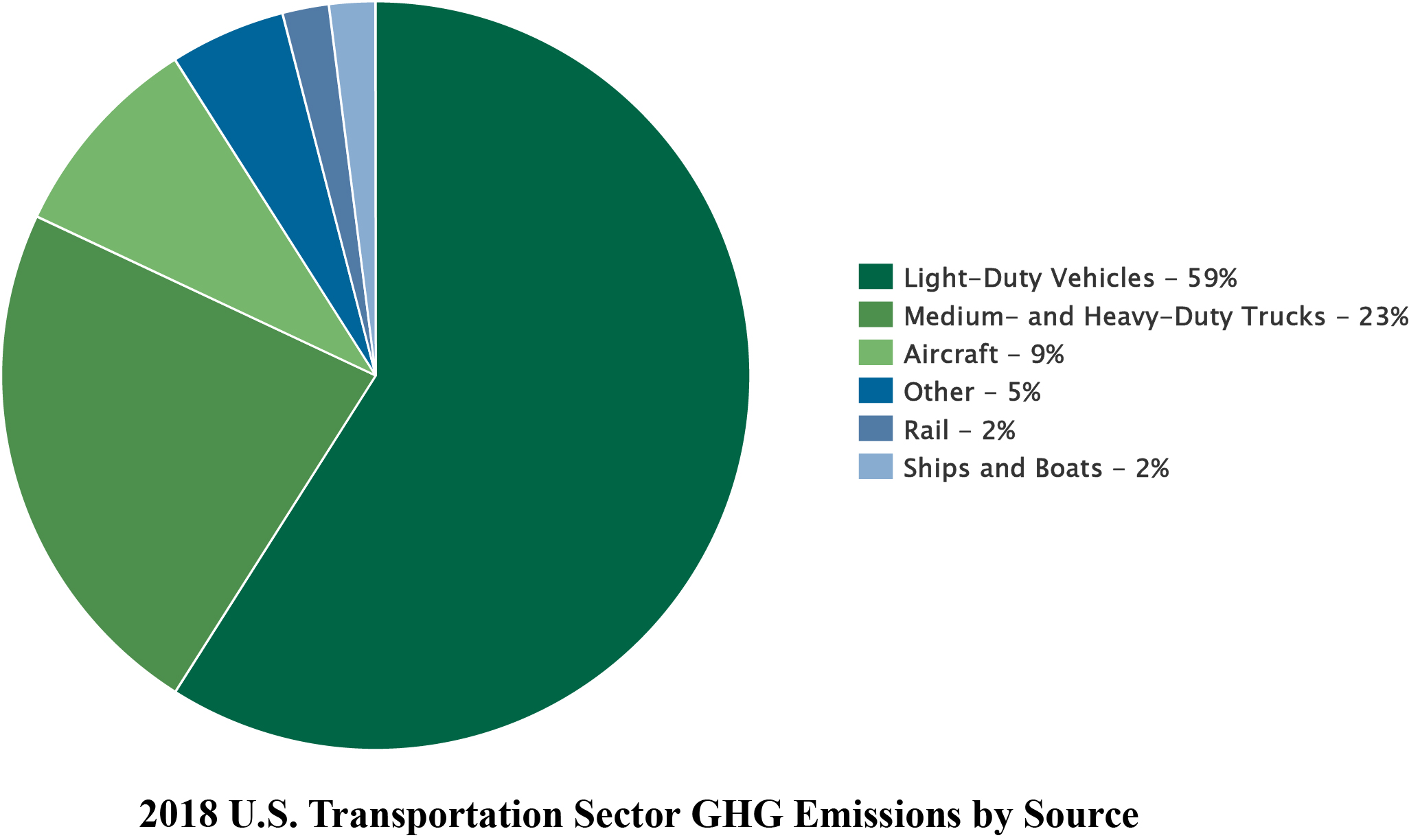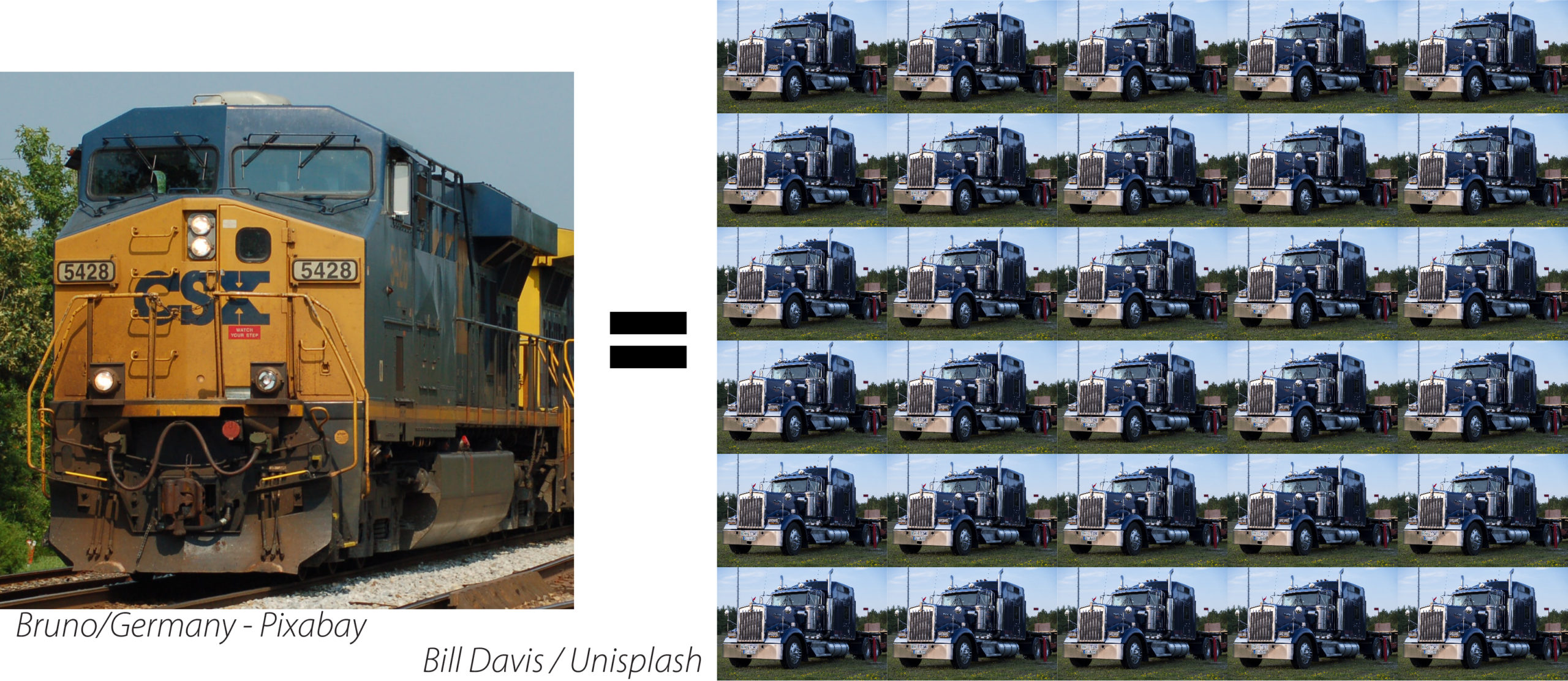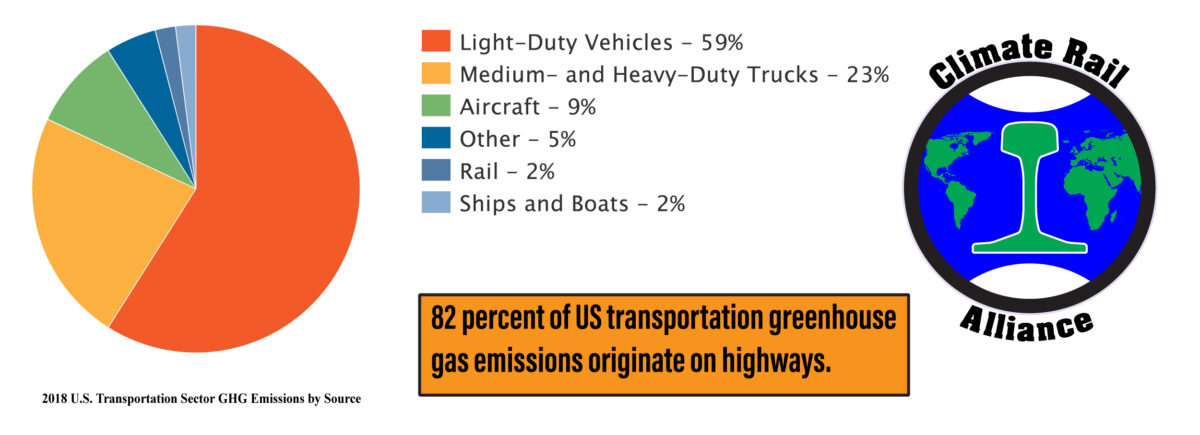That is the question.
Time is running out.
That is an understatement.
We have less than ten years to reduce greenhouse gas emissions by 50 percent. Failure to do so may make our dire situation irretrievable.
Among the proposed measures to address the climate emergency are High Speed Rail and electrification of the rail network. We have already addressed High Speed Rail as an inappropriate climate emergency response. How about electrification?
Highway transportation is responsible for 82 percent of transportation greenhouse emissions. Rail is responsible for two percent.


It is easy to look at a locomotive, overwhelmingly huge and noisy with an enormous fuel tank and exhaust stacks and think that this must be electrified. However, stepping back to look at the overall scheme of things may yield a different conclusion.

The first essential step is to move as much highway traffic to rail as possible in the shortest possible amount of time.
Addressing climate change, making the changes needed for a 50 percent reduction in emissions in the next nine years will require an enormous funding effort. Funding must address the most effective, quick return solutions.
The US rail network and the rail transportation business are not currently configured or equipped for the amount and type of traffic that must be moved from highway to rail. A huge amount of work and funding is needed to configure the railroad network and the railroad business for frequent, convenient, and reliable passenger and freight service.
That effort must come first, not at some future time at the expense of early electrification efforts.
TAW
